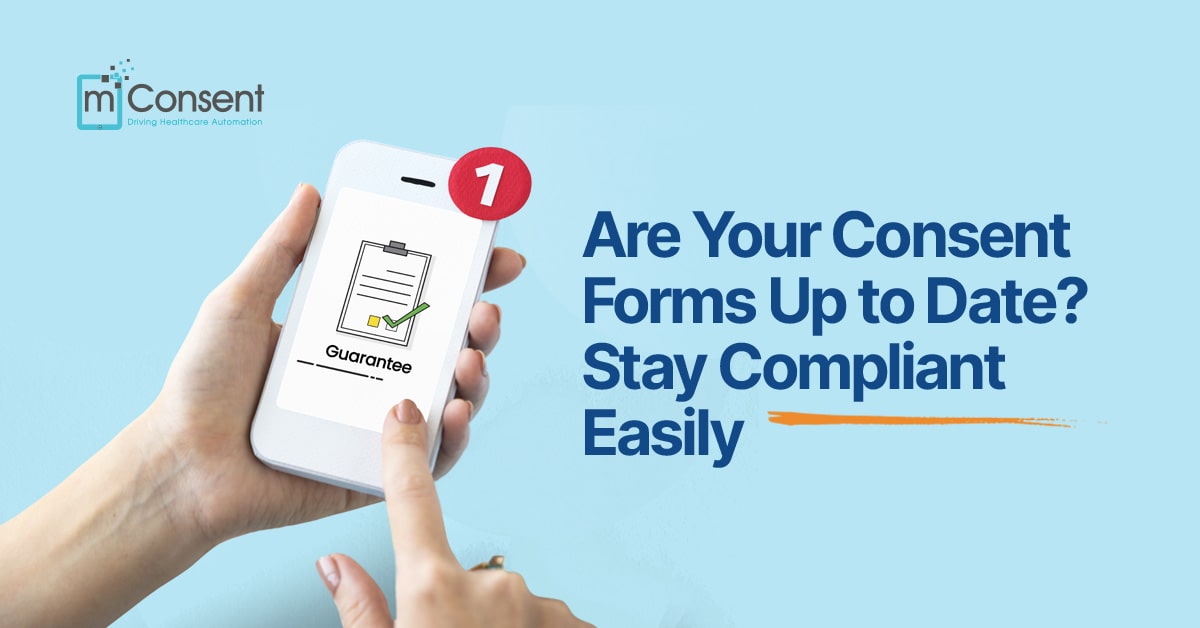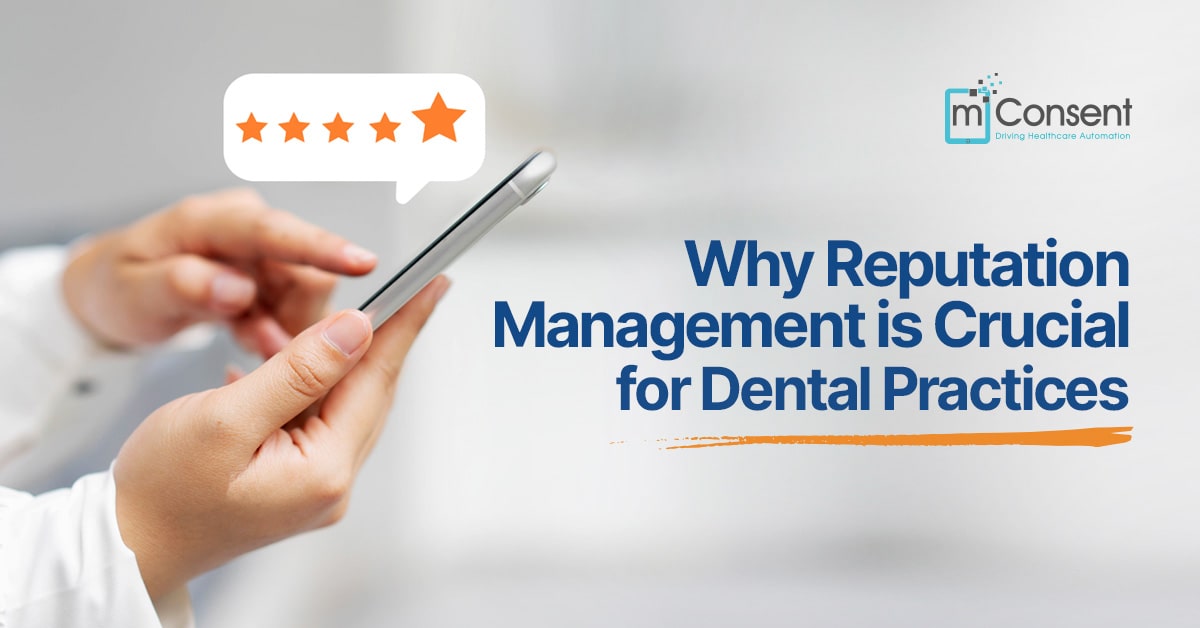Informed consent is no longer a mere formality in dental industry. It is the heart of ethical practice, a legal safeguard, and most importantly, a bridge of trust between the dental professional and the patient. As dental technology advances and treatments become increasingly complex, ensuring that patients are fully informed and engaged in their healthcare decisions is more crucial than ever.
With growing expectations from patients and increased scrutiny of medical ethics, dental practices must move beyond the paper-form approach. Informed consent needs to be dynamic, patient-centered, and supported by tools that ensure clarity, understanding, and comfort. This is where mConsent, the dental service software, plays an important role.
What Is Informed Consent and Why Does It Matter?
Informed consent isn't just about getting a signature. It's a process that involves honest, empathetic communication. Patients must be informed of the treatment plan, understand the potential benefits and risks, and be aware of any available alternatives. When done right, informed consent empowers patients to take ownership of their health and strengthens the patient-provider relationship.
It also protects dental practitioners legally and ethically. A signed consent form without real understanding offers limited protection. But is clear communication documented with transparency? That builds both trust and legal defense.
Core Elements of Informed Consent in Dental Practice
To deliver truly informed consent, several key components must be honored:
- Disclosure: Be transparent about what the treatment involves, why it's necessary, what could go wrong, and what other options are available.
- Comprehension: Use language that your patient understands. Visual aids and digital explanations can make a big difference.
- Voluntariness: The patient must feel free to make a decision without pressure.
- Competence: Determine whether the patient is mentally and legally capable of making an informed decision regarding their treatment.
- Consent: Verbal or written confirmation that they agree, appropriately documented in their file.
These steps form the ethical and legal foundation for every dental interaction.
The Human Side of Consent: Communication with Heart
Let's face it dental visits can be intimidating. When patients walk into a clinic, they bring not just their dental issues but also fear, confusion, and sometimes shame or anxiety. This makes your approach to informed consent all the more crucial.
Instead of delivering information in a robotic tone, engage them with empathy:
- Speak simply: Skip the jargon. Say "gum infection" instead of "periodontitis" or "tooth removal" instead of "extraction."
- Encourage questions: Create a safe space where patients can ask, "What does that mean?" without embarrassment.
- Listen to fears: Sometimes, patients just need to be heard before they can make a decision.
Where mConsent Steps In: Enhancing Every Touchpoint
Modern dental practices are discovering how technology can turn informed consent from a legal checkbox into a meaningful, patient-friendly experience. mConsent, the all-in-one dental service software, supports every stage of the informed consent journey:
Clear Communication with Digital Forms and Messaging
Forget crumpled paper forms and rushed explanations at the front desk. With mConsent's Digital Patient Intake tools, patients receive easy-to-read treatment explanations before they even walk in. These digital forms can be accessed online or via iPad apps and customized with procedure details.
Two-way texting and Secure Messaging allow for continued conversations after the visit. Patients can ask follow-up questions and receive real-time clarifications. This improves understanding and trust two key pillars of informed consent.
Improving Understanding with Visual Aids and Multimedia
mConsent allows the integration of educational videos and visual content within the digital intake process. A patient watching a short, engaging video about root canal treatment will feel far more informed than one who reads a dense, jargon-filled pamphlet. This not only boosts comprehension but reduces anxiety patients are more likely to give genuine consent when they know exactly what to expect.
Ensuring Voluntariness and Reducing Pressure
Self-check-in kiosks and digital intake forms empower patients by giving them more control over their intake process. Without the pressure of a crowded waiting room, patients can read treatment details at their own pace and decide in a more relaxed setting. This autonomy is crucial in ensuring that the consent is truly voluntary, not rushed or coerced.
Enhancing Documentation and Legal Protection
mConsent takes documentation seriously. Consent forms can be digitally signed and securely stored, ensuring that records are easily retrievable in the event of a legal or clinical review. Better yet, consent logs can be automatically linked to the treatment plan and patient file. This not only enhances protection for the provider but ensures continuity of care.
Bridging Language and Cultural Gaps
Multilingual support and translated consent materials facilitate the delivery of effective care to diverse patient populations. Language should never be a barrier to understanding. With mConsent, practices can provide tailored content to patients in their native language, fostering better comprehension and stronger relationships.
Supporting Patients with Cognitive or Emotional Barriers
Patients with cognitive challenges or high dental anxiety often need more personalized explanations. mConsent's platform enables the breakdown of complex information into simple, visual components, making it easier for all patients to understand. For those who need a guardian's involvement, the digital platform also facilitates remote consent, enablig decision-makers to participate even if they aren't physically present.
Informed Consent is Ongoing, Not One-and-Done
Another common misconception is that consent is obtained once at the beginning. In reality, it's a continuous dialogue.
With mConsent's features, such as appointment reminders, treatment plan notifications, and automated follow-ups, dental practices can keep patients informed if anything changes. Whether it's a new risk that arises or an adjustment to the procedure plan, consent can and should be revisited.
Real Impact: From Consent to Connection
Informed consent isn't just about compliance it's about connection. It's about looking a patient in the eye and saying, "You deserve to understand your care." And when patients feel heard, valued, and informed, they're more likely to show up, follow instructions, and return for regular care.
mConsent takes that human connection and supports it with intelligent, intuitive software. From the moment patients fill out their forms to the time they pay their bill or leave a review, mConsent ensures every step is smooth, respectful, and centered around the patient's needs.
Why Practices Trust mConsent
Dental professionals who implement mConsent's solutions often report not only improved workflows but higher patient satisfaction. That's because:
- Patients feel more respected when they're given time, tools, and transparency.
- Staff are less stressed, thanks to automation and digital documentation.
- Practices run more efficiently as paper forms, missed appointments, and unclear communication become a thing of the past.
Conclusion: Empowering the Future of Dentistry
Informed consent is more than a legal requirement it's a moment of trust, a conversation, a shared decision. Nowadays, patients are increasingly informed and tech-savvy, and traditional approaches are no longer sufficient.
By combining the empathy of good dental care with the innovation of mConsent, practices can transform how they approach consent and, in doing so, transform their patient relationships, their legal protection, and the quality of care they deliver.
mConsent empowers dental professionals to do what they do best: care deeply, communicate clearly, and build lasting trust with every patient who walks through the door.
""

![HIPAA Release Form – All you Need to Know [Instant Download]](https://mconsent.net/wp-content/uploads/2021/09/HIPAA-Release-Form-All-you-Need-to-Know-Free-Release-Form.jpg)















